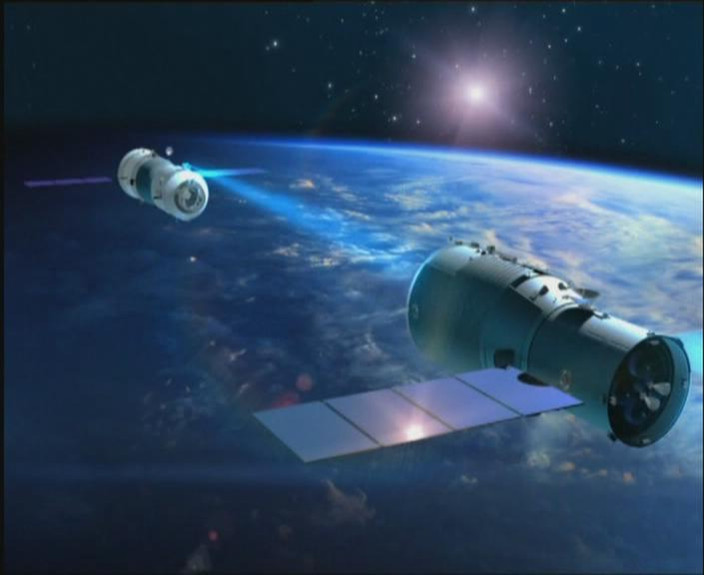
- A
- A
- A

BEIJING - China successfully accomplished its first space-docking mission on Thursday,marking a milestone for its long-term manned space program.
Nearly two days after it was launched, the Shenzhou VIII spacecraft docked with theTiangong-1, or "Heavenly Palace", space module at 1:36 am, some 343 kilometers above theEarth, Wu Ping, spokeswoman for China's manned space program told a news conference inBeijing.
But Wu stressed this is just an "initial" success, as the spacecraft still have to prove they cancomplete a 12-day flight under Tiangong-1's control and then separate smoothly.
Zhou Jianping, chief designer of the manned space program, however, was over the moon atthe success of the first docking procedure.
"This will make it possible for China to carry out space exploration on a larger scale," Zhousaid, adding that more than 20 manned space flights are planned from 2012 to 2020 and Chinanow has the basic technology and capacity to construct a space station.
According to the control center, telemetry sensors on the Shenzhou VIII spacecraft took overfrom ground control at 11:08 pm on Wednesday and guided it to the tail of the Tiangong-1module, which was launched on Sept 29.
After two hours and 20 minutes, the Shenzhou VIII was within centimeters of Tiangong-1. In thefollowing eight minutes, the docking mechanisms on the vessels completed the procedure ofcapturing, buffering and locking.
Spokeswoman Wu said the two vessels will try a second docking after separating on Nov 14, inorder to find out whether repeated docking might affect the docking mechanism's performance.
The second docking will be carried out in sunlight, unlike the first one, which was done in theshadow of the sun to avoid sunlight interfering with the telemetry devices, she said.
All of the components in the docking mechanism, as well as 600 onboard instruments, weredesigned and manufactured by Chinese firms, mostly State-owned enterprises, said Wu.
Pang Zhihao, deputy editor-in-chief of Space International, said the flight control of a dockedassembly and undocking are not as simple as they might sound.
"Before docking, Tiangong-1 was orbiting without a burden. Now it carries an 8-ton spacecraftand is controlling the spacecraft's 13 sub-systems such as its attitude, temperature andenergy," he said.
The Mir space station, operated from 1986 to 2001, at first by the Soviet Union and then byRussia, once had problems with its attitude control, and had to continuously adjust the attitudeto stay in orbit, he said.
The undocking procedure is also risky, and spacecraft designers have prepared contingencyplans, including using explosive devices to blow off the hooks if they fail to unlock, he said.
With Thursday's successful docking, China became the third country to master the techniqueindependently, but Pang warned that mastering the technology is not the same as havingmature technology.
China plans to conduct two similar docking exercises in 2012, with at least one expected tocarry astronauts, in preparation for the proposed launch of a space lab by 2016 and thebuilding of a space station by 2020.
China Daily
(




